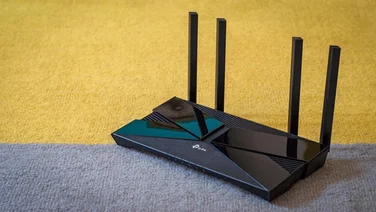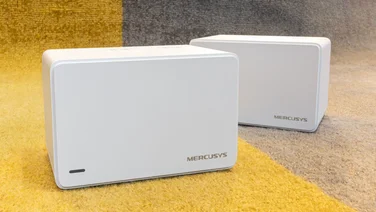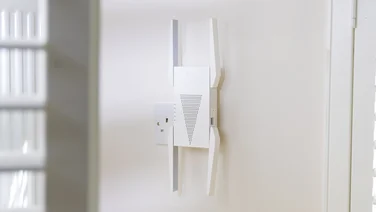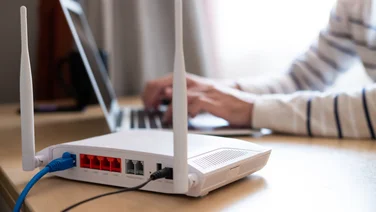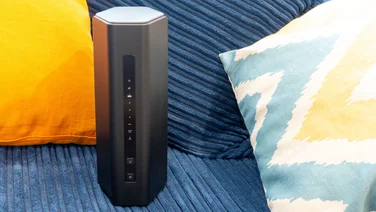To help us provide you with free impartial advice, we may earn a commission if you buy through links on our site. Learn more
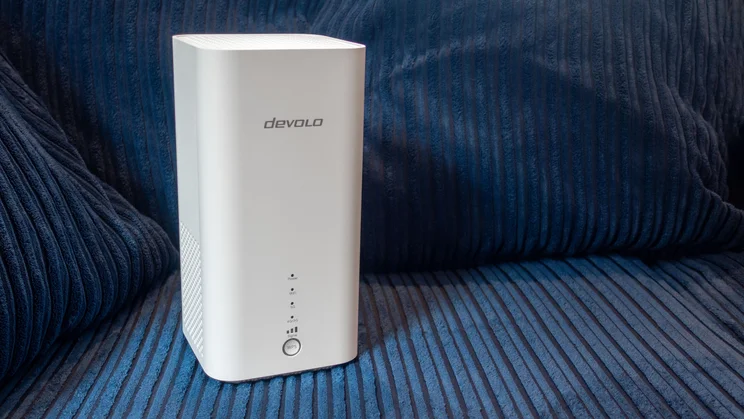
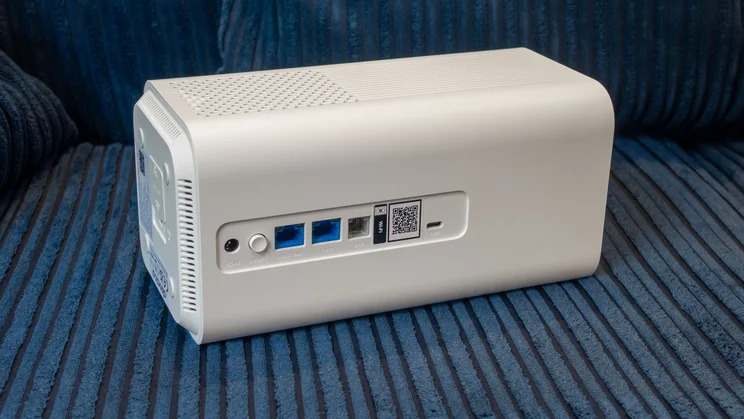
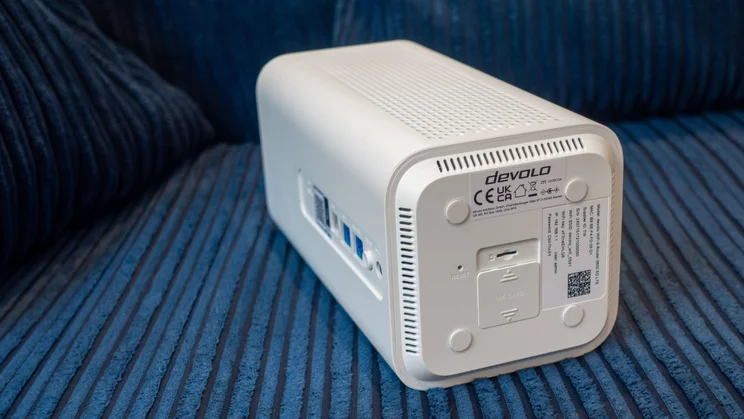
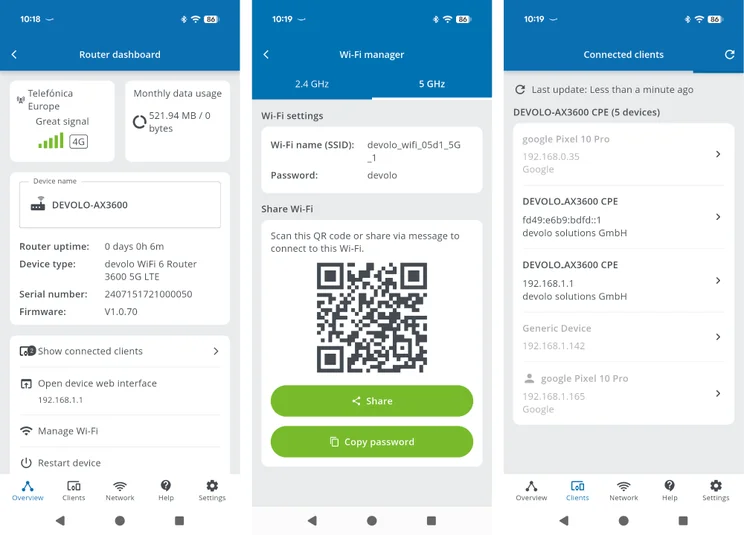
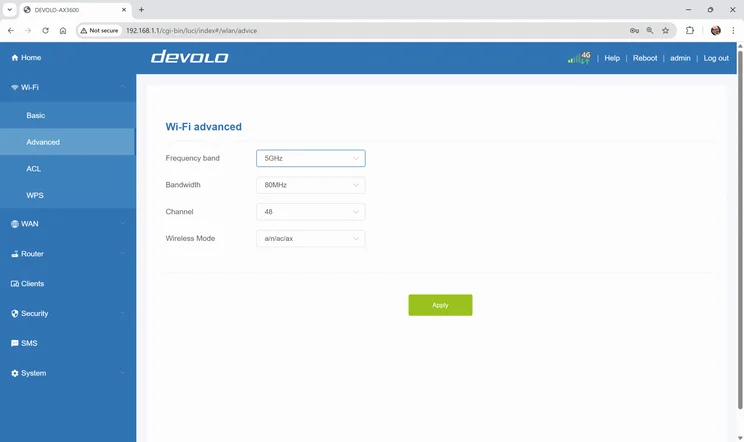
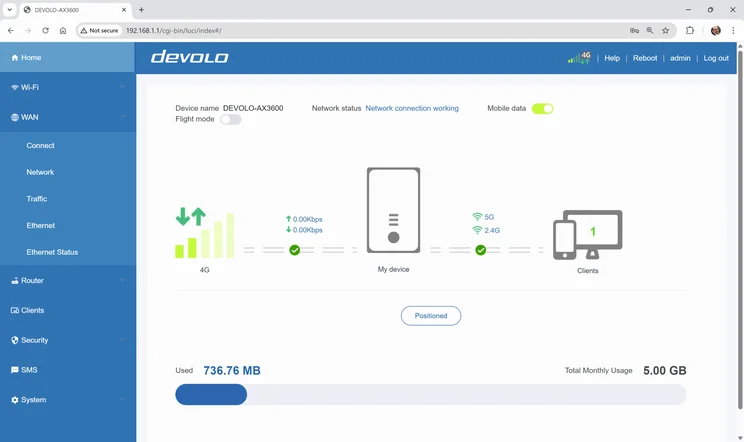
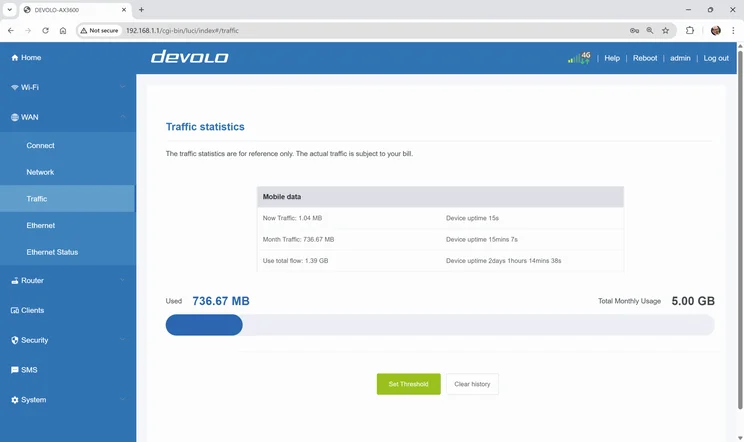
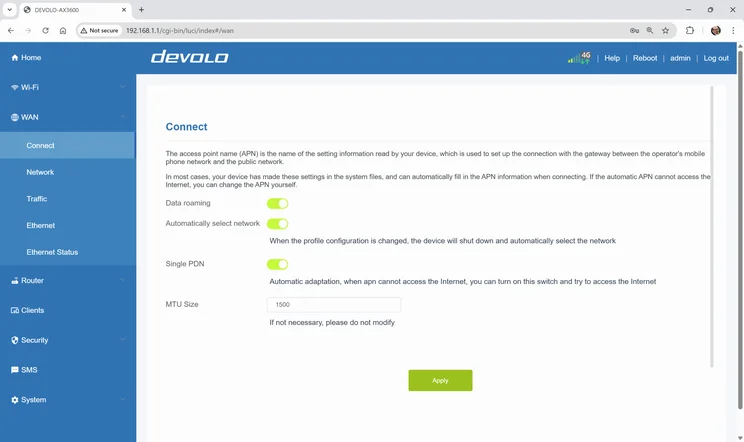
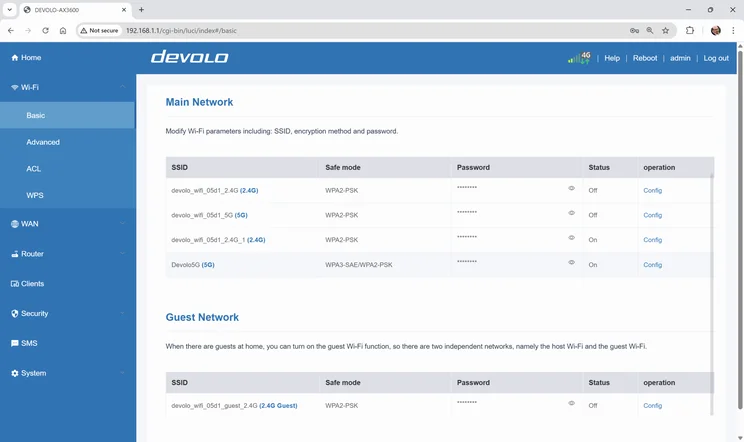
- Native, high-speed 5G
- Strong Wi-Fi 6 performance
- Tracks mobile data usage
- Pricey compared to other solutions
- Limited wired connectivity
Devolo’s latest router does everything you’d expect from a Wi-Fi 6 router – plus, it has a nano-SIM slot on the bottom, enabling it to work with mobile internet services as well as regular broadband connections. That makes it ideal for locations where you can’t get a fixed line, or for short-term occupancies where it’s not economical to take out a regular broadband contract.
Although the router doesn’t support the latest Wi-Fi 7 technologies, our tests show that it’s capable of providing fast, wireless internet access throughout a whole home. It also offers enough configurability to suit even technical tinkerers. If there’s a catch, it’s the price: £400 is a lot more than you’ll pay for a regular Wi-Fi 6 router. But mobile broadband routers are always expensive, and this one delivers an excellent combination of performance and versatility.
Devolo WiFi6 Router 3600 5G: What you need to know
The Devolo WiFi 6 Router 3600 5G is a dual-band Wi-Fi 6 router, with a total wireless bandwidth of 3,600Mbits/sec. The main 5GHz band supports connection speeds of up to 2.4Gbits/sec, while devices using the 2.4GHz frequency range (nowadays mostly smart gadgets and appliances) share a further 1.2Gbits/sec of capacity.
With its 5G nano-SIM slot, the router is capable of connecting to mobile internet services at speeds theoretically rivalling a fixed fibre connection. Needless to say, the performance you actually see will depend on the service in your area, but with six large antennae supporting 4×4 MIMO, this router should get the best out of whatever coverage is available. Where coverage is poor, it can drop down to a 4G connection, or even 3G (although hopefully it won’t come to that).









One of the Ethernet ports at the back can also accept a standard WAN connection, so if you buy the Router 3600 as a temporary solution for a location that lacks a fixed broadband line, you can seamlessly switch over to a DSL or fibre connection should one subsequently become available.
Interestingly, you can also plug in an analogue phone and use the cellular connection for talking to your friends and family. What a concept.
Price and competition
There aren’t many routers on the market with a built-in SIM slot. One we reviewed a few years ago is the TP-Link Archer MR600 V2; this does a similar job to the Devolo Router 3600, but it’s limited to 4G mobile internet and Wi-Fi 5, which means it’s far slower than the Devolo. On the plus side, it’s very affordable, currently selling on Amazon for £108, and might be sufficient for light office use, or a small household with modest connectivity demands.
The 5G options we’ve seen are all a lot more expensive. The Netgear Nighthawk M5, reviewed back in 2022, came with an internal battery for fully mobile hotspot services, but it cost a whopping £763. It’s now been superseded by the Netgear Nighthawk M6 Pro, which adds Wi-Fi 6E for a slightly lower price, but you’re still looking at £700.
For home installations, Netgear also offers the Orbi NBK752 mesh; this gives you two units to distribute the 5G love around your premises, but again the price is high at £657. In this context, the Devolo router isn’t bad value.









There are a few other possible approaches to consider. One is to take out a fixed-term mobile broadband contract that comes with a bundled Wi-Fi hub. Elsewhere, we’ve rounded up the best mobile broadband services, with 5G prices starting at £22 per month; depending on your needs, and how long you plan to keep the service going, that may be a better deal than buying your own router and a separate SIM.
Alternatively, you could pick a regular router that lets you attach a 5G dongle, or tether a spare phone over USB. The Asus RT-BE58U is an excellent choice: it’s currently available for a very reasonable £99 and it even supports the latest Wi-Fi 7 standard. A 5G adapter is actually liable to cost more than the router – for example, the Acer Predator Connect D5 costs £120 – but the whole package still works out cheaper than the Devolo.
The downside is that it’s not such a neat, integrated platform, and while the Asus router can track your data consumption, this information is tucked away in the interface, rather than being front and centre as it is in the Devolo management dashboard.
Features
Some 5G routers are designed as mobile hotspots, intended to accompany you on short breaks or office away-days – but portability clearly isn’t a priority here. The Devolo WiFi 6 Router 3600 5G stands 223mm tall, with a 113mm square footprint, a stack of LEDs at the front showing the status of your Wi-Fi and mobile broadband connections, and a big physical WPS button.
At the back, you’ll find twin Ethernet ports, the lower of which supports 2.5GbE, as well as the optional wired WAN connection. It would be nice to have a few more ports, but you can always attach a cheap switch to add more of that.









There’s also an RJ11 socket for hooking up a traditional phone, and a USB-C connector – but this is solely for management, and won’t accept a flash drive, printer or a second 5G adapter for failover.
Software features are well covered, with the web portal offering more or less every function you’re likely to want. You can split up the 2.4GHz and 5GHz bands into individual SSIDs, enable an isolated guest/IoT network, apply time limits to kids’ devices and even set the router to direct all traffic through an external VPN server – although this is a blanket setting, without the per-client configurability that both Asus and TP-Link offer.
Devolo also helps you avoid going over your monthly data allowance by showing how much data you’ve used this month on the home pages of both the web interface and the companion Home Network mobile app. You can set the management portal to automatically suspend your internet connection after a certain number of bytes have been transferred, but the mobile app can’t send you threshold alerts, so the first warning you’ll get is when the internet abruptly stops working.









Performance
With six large antennae and 4×4 MIMO support, this router ought to get a stronger connection to your local cell tower than a typical smartphone. I tested this with my Pixel 10 Pro smartphone: with the phone showing five bars of 5G reception, I tethered my laptop to its hotspot and fired up the Google Speed Test tool, which reported an average download speed of 61Mbits/sec (around 7.6MB/sec) – not too shabby.
Then I popped out the SIM, inserted it into the Devolo router and repeated the test; at this point download speeds leapt to 82.7Mbits/sec, an improvement of more than 35%.
The boxy Devolo can also broadcast Wi-Fi throughout your home far more effectively than a compact smartphone. When I carried my laptop to the other end of the room, the download speed over my phone’s hotspot network dropped to 21.8Mbits/sec, and upstairs I got just 16.8Mbits/sec – equivalent to just over 2MB per second.
For comparison, I tested the router’s domestic Wi-Fi performance in my usual way, taking my laptop to different rooms and copying files to and from a local NAS unit attached to the router’s 2.5GbE socket. Even though this router is limited to Wi-Fi 6, it delivered admirable download speeds in every location. Here’s how it compares to the other routers we’ve mentioned above:
I should mention that the last three routers in this table were tested in my old home, so their results aren’t directly comparable to the newer models. Even so, it’s clear that, whether up close or at the opposite end of the building, the Devolo is vastly faster than a tethered smartphone, and far outpaces other routers, delivering an excellent minimum of 36.1MB/sec downstream, while the pocketable Nighthawk M5 couldn’t deliver a connection at all from more than two rooms away.
The router even holds its own next to Asus’ affordable Wi-Fi 7 router. It can’t match the speeds of premium offerings such as the TP-Link Archer BE550 or the Netgear Nighthawk RS700, but if you’re looking for an integrated 5G connection, I haven’t seen a better option for whole home coverage.
Devolo WiFi6 Router 3600 5G: Verdict
Not everyone needs a dedicated 5G router. If you all you need is an occasional short-range internet connection, you can always switch on hotspot mode on your phone. For wider coverage and more manageability, you can connect your phone to a compatible router, or invest in a dedicated dongle.
However, if you want a fully featured, full-time, full-speed wireless networking solution, the Devolo has you covered. It can pick up a stronger 5G signal than a tethered phone, and broadcast it over a much greater area – plus you don’t need to pull it out of your pocket and turn on connection sharing every time you want to get online.
There’s no denying that it’s an expensive option, especially since you’ll also need a dedicated SIM to provide the connection. But over time it could work out cheaper than a standard mobile broadband package – and should your circumstances change in the future, this router can instantly switch to a DSL or fibre service.
If you can handle the price, I’d happily recommend the Devolo WiFi 6 Router 3600 5G to anyone wanting to run a proper home network off a 5G connection.


